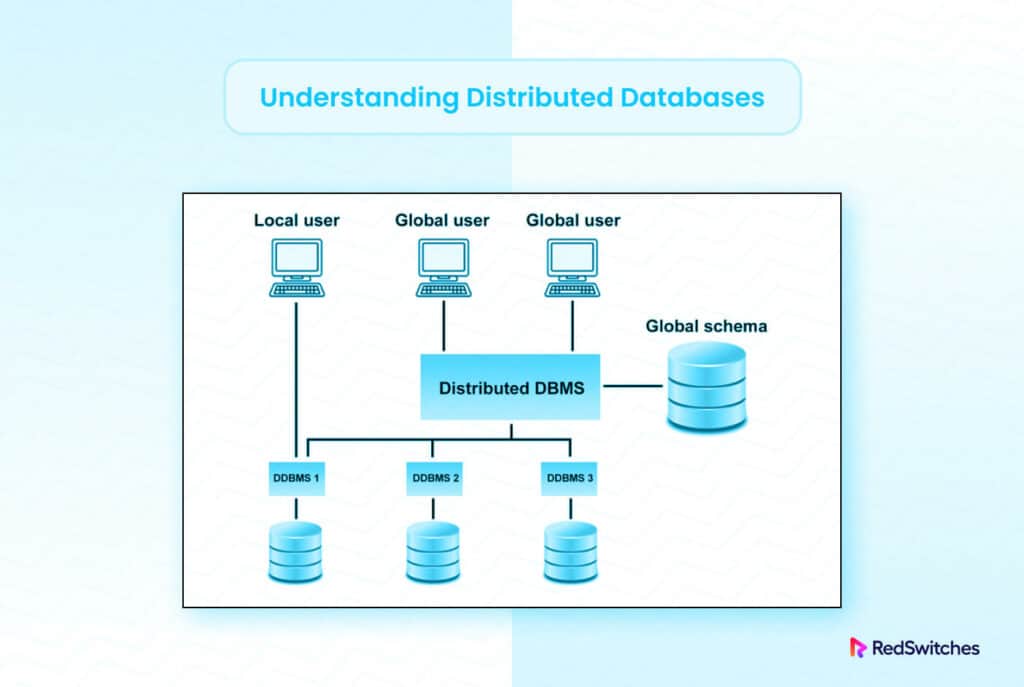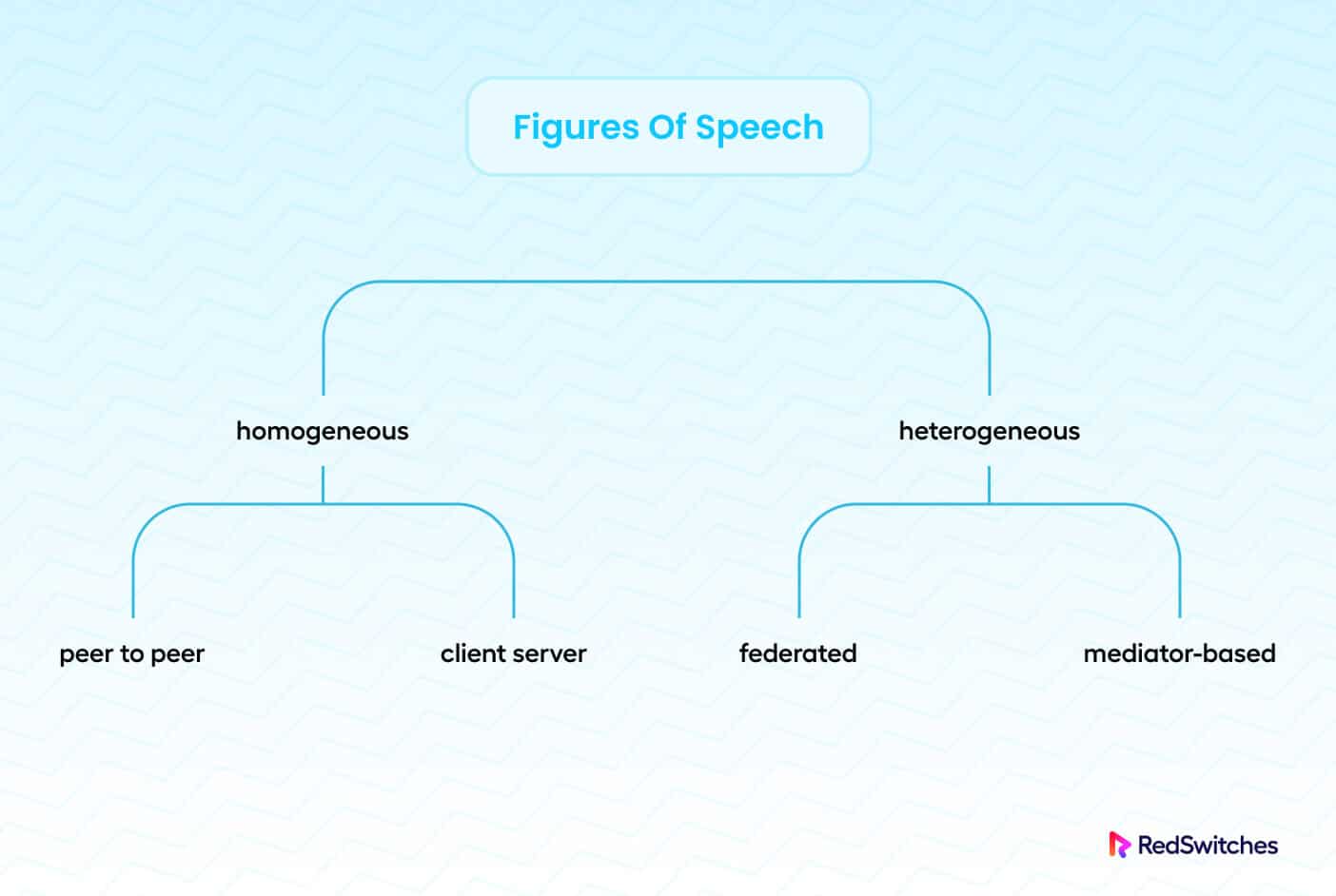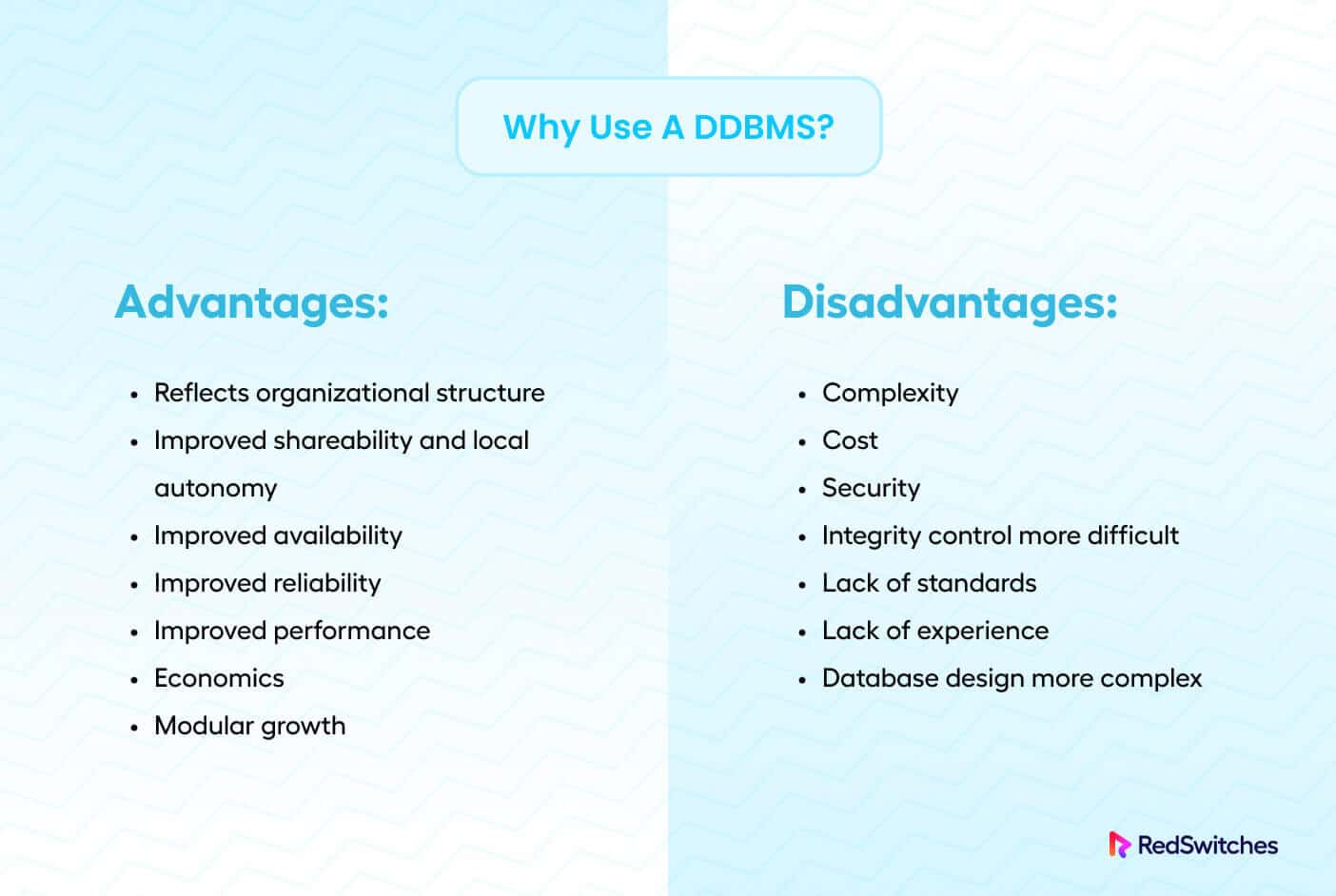Multinational companies operate from different regions worldwide. These businesses need a coordinated central system that allows all regional branches to maintain inventory, sales, and customer data while replicating vital information to a central database.
This setup enables each branch to manage its operations efficiently and independently, and data synchronization ensures that the headquarters can access real-time insights and make informed decisions across all departments and units.
In this scenario, businesses need a distributed database that operates locally and globally.
A distributed database, or DDBMS, is a database management system that stores data across multiple interconnected sites or nodes spread across a network. This decentralized architecture provides several benefits, including enhanced scalability, fault tolerance, and improved performance.
In particular, businesses prefer working with a DDBMS because of optimized data accessibility and availability. As a result, these systems facilitate seamless operations for geographically dispersed business units.
In this blog, our core focus will be learning about distributed databases, their types, architecture options, and examples of DDBMS.
Table Of Contents
- How Does Distributed Database Work
- Types of Distributed Databases
- The Architecture of Distributed Databases
- Components of Distributed Databases
- Advantages of Distributed Databases
- Why Should Businesses Consider DDBMS?
- Challenges of Distributed Databases
- Use Cases for Distributed Database Systems
- Conclusion
- FAQs
How Does Distributed Database Work?
Data organization is the key to how distributed databases handle the challenges of working with distributed systems and access requests.
In a DDBMS, data is fragmented into smaller subsets and spread across multiple nodes within a network. This distribution is typically organized through predefined partitioning techniques like range-based or hash-based methods.
Each node assumes responsibility for managing specific data subsets. Additionally, the designers can replicate data across several nodes to ensure fault tolerance and accessibility.
During operations, when a query or request is dispatched to the distributed database, a query coordinator (often a central component or an admin-designated node) receives the request. The coordinator evaluates the query and identifies the nodes that should participate in processing the request based on the contents of the requests and the data distribution and replication settings of the DDBMS. The coordinator then routes the query to the relevant nodes processed locally on their respective data subsets.
After processing, the nodes transmit the results to the coordinator, who may aggregate them to form the final query outcome.
This distributed approach empowers the database to achieve remarkable scalability by distributing the workload across multiple nodes, allowing it to handle an increased volume of concurrent requests and accommodate extensive data storage and management requirements.
Types of Distributed Databases
The DDBMS is categorized into two major types – Heterogeneous DDBMS and Homogeneous databases.
Homogeneous DDBMS
In a homogenous distributed database, all locations share the same software and know each other’s existence. They collaborate to process client requests and agree to coordinate their actions.
However, in doing so, each site sacrifices some degree of autonomy concerning direct changes to the system’s architecture or software. Despite the shared architecture, the clients (users and applications) see the homogeneous DDBMS as a unified and consistent system.
Heterogeneous DDBMS
In a heterogeneous DDBMS, different nodes (sites) may employ diverse schemas and software configurations.
The variation in architecture poses a significant challenge for query processing and transaction handling. This happens because the individual sites in the DDBMS may lack awareness of each other, leading to limited capabilities for participating in transaction processing.
In heterogeneous systems, nodes may operate on different hardware and software, and the data structures at various locations may not be compatible. Each location might utilize other operating systems, and database applications, further complicating the integration across the distributed network.
The Architecture of Distributed Databases
Given the complexity of the idea, you can find several implementations of the architecture of distributed database systems. We’ll cover the three most common examples in the following sections.
Client-Server Architecture
In this architecture, multiple clients connect to a central server that acts as the focal node for the distributed database system. The server takes charge of transaction coordination, data storage management, and access control.
Peer-To-Peer Architecture
Every node in the distributed database system is directly connected to all other nodes. Each node is responsible for managing its data and coordinating transactions collaboratively with other nodes.
Federated Architecture
Each node in the distributed database network maintains its individual database in this configuration. However, these databases are unified through a middleware layer that offers a standardized interface for accessing and querying the data.
Components of Distributed Databases
Now that you understand the architecture of DDBMS, let’s discuss the components that make up a distributed database.
Nodes
Also known as Sites, these constitute the building blocks of the distributed system. Depending upon the system’s requirements, these nodes can range from single workstations to servers. Nodes operate in a predetermined configuration where individual nodes store and process data subsets.
Network Hardware and Software Components
These can be the same for all nodes, or each node can have a unique combination of hardware and software components.
Network hardware encompasses devices like routers, switches, and cables, while network software ensures efficient data transmission and reception.
Communications Media
These are the physical channels through which data moves among the nodes. These channels include wired connections, Ethernet cables, and wireless technologies like Wi-Fi or cellular networks. Businesses can lay down their communications media or lease from third-party providers.
The Transaction Processor (TP) / Application Processor (AP)
This component (Transaction Manager (TM)) acts as a crucial intermediary between applications and the distributed database. Usually, the TP/AP is installed at each node, where it receives and processes data requests from applications and handles remote and local data access queries.
The Data Processor (DP) / Data Manager (DM)
This is another vital component present in every node. Its primary responsibility involves managing data storage and retrieval operations specific to that node. It efficiently stores and retrieves data located at the node and, depending on the configuration can even serve as a centralized local DBMS.
Advantages of Distributed Databases
Distributed database management systems offer many advantages by effectively distributing data across multiple locations while ensuring seamless integration.
Let’s discuss the benefits that boost an organization’s efficiency, scalability, and resilience and empower them to thrive in today’s interconnected and data-centric environment.
Improved Performance
Distributed systems leverage the collective resources of multiple systems, resulting in higher performance levels than centralized systems.
Cost Efficiency
While distributed systems may have higher implementation costs initially, they are cost-effective in the long run. Unlike local databases, DDBMS allows users to access multiple nodes’ data and processing capabilities. This reduces the overall expenses associated with data replication and access.
Enhanced Efficiency
The presence of multiple independent nodes in distributed systems allows users to use the nearest set of resources that fit their requirements. This leads to significant time savings and better resource utilization.
Scalability
Built with inherent scalability, distributed database systems allow for easy expansion by adding more nodes to accommodate increasing workloads. This eliminates the need to spend resources on upgrading individual nodes.
In addition, most DDBMS architectures don’t significantly restrict the number of nodes. That means the system can add as many nodes as it needs for the smooth handling of high-demand tasks.
Reliability
Distributed database systems excel in reliability, as the failure of a single node does not disrupt the functioning of other system components. The remaining nodes continue to operate smoothly, contributing to the overall system’s dependability.
Cost Savings
Adding nodes to the system is often more cost-efficient than purchasing new local database components and licenses.
Versatility
Distributed systems are highly adaptable and can be customized to suit emerging business requirements. This introduces flexibility that makes distributed databases a much better business fit than isolated local systems.
Why Should Businesses Consider DDBMS?
Not every business needs a DDBMS, despite the many advantages described above. We recommend businesses evaluate their decision on the following five parameters to see if DDBMS are a better fit for their operational requirements.
The Business’s Distributed Nature
Modern organizations are often divided into multiple units scattered across different geographical locations. In some cases, each branch maintains its data locally and thus doesn’t require a DDBMS. However, if these units need to communicate to a central location for business strategy instructions, using a DDBMS makes better business sense.
Data Sharing Requirements
Effective communication and data sharing between various organizational units demand synchronized common databases or replicated databases. The business must decide whether the management needs a full-featured DDBMS or a centrally-replicated local data store.
The Business Need For OLTP and OLAP
Distributed database systems are crucial in supporting Online Transaction Processing (OLTP) and Online Analytical Processing (OLAP). Businesses that use these systems in their operations usually need a DDBMS to better utilize the data collected and dispersed over to distributed locations.
Database Recovery Needs
The data replication across various sites makes DDBMS a great option for setting up automated data recovery features. This allows the system to service user requests from a different working data store when the local node is unavailable. As a result, the system continues to function while the IT teams work on restoring the damaged node.
Support For Multiple Application Software
DDBMS provides a unified interface that allows businesses to use the same data across different platforms. This is an important factor for businesses that deploy different tools and applications at various locations.
Challenges of Distributed Databases
While DDBMS offers numerous benefits, you should understand the following drawbacks of these systems to make informed decisions for your business.
Complex Nature of the System
Distributed databases are a network of many nodes located at different locations. Therefore, the nature of a DDBMS is comparatively more complex than a centralized DBMS. These systems also require more complicated software that could mean a steep learning curve for managers and IT teams.
Overall High Costs
Compared to stand-alone systems, DDBMS usually have higher setup and operational costs. These costs can significantly increase as the business sets up additional nodes at new locations or add nodes to existing operations in response to increased demands.
Security Issues
A distributed database uses a network for communication among the nodes. While IT teams can secure individual nodes with on-site encryptions and related security measures, protecting the communications is a serious security challenge.
Integrity Control
Maintaining data consistency in a large DDBMS system can become difficult because of the high instances of data changes. A related issue is that all changes made to data at one node must be reflected across all nodes. This also inflates communication and processing costs required to maintain data integrity.
Problems in Inter-component Communication
Depending on the architecture choices, a DDBMS can have different hardware and software components at different nodes. This raises the challenge of making these different components communicate and exchange data seamlessly. Overcoming this challenge could add to the complexity of the overall database system.
Use Cases for Distributed Database Systems
Distributed databases have seen a rise in popularity as businesses become more interconnected. We’ll now mention some industries where you can see DDBMS replacing more traditional database solutions.
Corporate Management Information System
Distributed databases are widely used in corporate environments to store and manage vast business data. This includes data related to employees, financial records, inventory, sales, and customer information. Distributed databases provide scalability, high availability, and real-time access, enabling efficient decision-making and data analysis at different organizational levels.
Multimedia Applications
With the proliferation of multimedia content like images, videos, and audio files, distributed databases are employed to store and deliver this content efficiently. Content delivery networks (CDNs) often utilize distributed databases to cache multimedia files closer to end-users, reducing latency and improving streaming performance.
Defence & Military Systems
DDBMS delivers data security and high availability, two critical requirements of this niche. The distributed nature ensures that information is available during localized disruptions or attacks.
Hotel Chains
Distributed databases find applications in the hospitality industry, particularly in hotel chains with multiple locations. They store and synchronize reservation data, customer profiles, billing information, and occupancy details, ensuring consistent and up-to-date information across all properties.
Conclusion
Distributed databases, also known as DDBMS, have emerged as a robust solution to tackle the complexities of modern data management. In this article, we delved into the core aspects of DDBMS, including their types and architecture, gaining insight into the effective distribution of data across multiple nodes to achieve scalability, high availability, and fault tolerance.
Here at Redswitches, we understand the role of distributed databases in shaping modern IT infrastructure. Our expertise in cutting-edge technologies enables us to provide customized DDBMS solutions, catering to businesses looking for seamless data management and unmatched performance. We deliver bare metal database hosting services that always ensure high availability and ironclad security.
FAQs
1) What are the different types of distributed databases?
A) There are two types of distributed databases: homogeneous and heterogeneous distributed databases.
2) How does data replication work in distributed databases?
A) Data replication involves maintaining multiple copies of data across nodes for redundancy and availability.
3) Is data consistency maintained in distributed databases?
A) Ensuring data consistency is a challenge in distributed databases due to their distributed nature. Various techniques are used to achieve eventual consistency.



